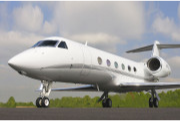This is an article that I wrote for Business Air magazine published June 2018.
The economic recovery since the 2008/2009 meltdown has been perplexing to say the least. I suspect that future economics students will be studying this last decade for many decades to come.
For us in aviation, it has been even more of a conundrum. Historic forecasting models of demand, that had strong correlations predicting upturns and health of the industry, turned out to be less accurate than throwing darts at a dart board.
I think far smarter people than myself will come up with new models that include business sentiment and optimism. In hindsight, many of the models were missing the business and political climate in the methods of weighting the results. I also believe there is another factor that I will explain below that might help the models.
There is reason for optimism in the upcoming years. New aircraft production was severely cut back and has still not increased by any noticeable margin. This will result in a shortage of 10 year and later aircraft on the resale market, increasing prices. A rise in late model prices will help new sales. New models, that are better and more efficient than those previous models, will also help drive demand. All of these are positive trends for our market.
I feel one indicator that we need to carefully watch is the cash to finance ratio with aircraft purchases. I am sure some of the banks have tracked this number. I think it tells us a good story about the health of the economy and subsequently our aircraft market.
When we started to come out of the recession an interesting phenomenon happened. We saw cash balances swell in the Fortune 500 companies as well as other business aircraft user companies. Several reports indicated the largest percentage of cash balances in the history of tracking this number for the S&P 500. Several large aircraft lending banks advised that their biggest competitor was not each other, but cash. With the exception of the high number of cash buyers, all historic models were indicating a recovery, yet 10 years later we are just seeing signs of that recovery.
My theory is along with weighting forecast models with economic and business sentiment, we need to track the aircraft cash versus finance purchases as an indicator of the aircraft buying economy. Consider the following: One, with interest rates at historic lows, this tells us that companies did not have an investment that paid them more than the interest rate on the loan to invest their cash, and two, they were nervous about liquidity. Both of these are indicators of an economy that is not as robust as it seemed.
When companies start financing more than paying cash for the aircraft they are putting that capital to better use in their business and they are not as concerned about a future liquidity event. That equation might also be helpful in determining business and economic sentiment.
As we move forward, keep track of aircraft purchases using cash versus financing. If my theory is correct, it will provide a good indicator of the strength of our aviation market recovery.
Mike McCracken
President
Hawkeye Aircraft Acquisitions





